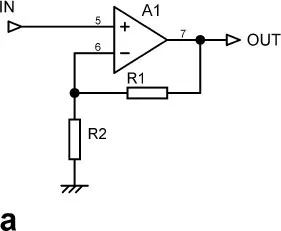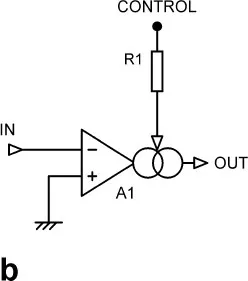
- 328 pages
- English
- ePUB (mobile friendly)
- Available on iOS & Android
Electronics for Vinyl
About this book
Electronics for Vinyl is the most comprehensive book ever produced on the electronic circuitry needed to extract the best possible signal from grooves in vinyl. What is called the "vinyl revival" is in full swing, and a clear and comprehensive account of the electronics you need is very timely. Vinyl reproduction presents some unique technical challenges; the signal levels from moving-magnet cartridges are low, and those from moving-coil cartridges lower still, so a good deal of high-quality low-noise amplification is required.
Some of the features of Electronics for Vinyl include:
- integrating phono amplifiers into a complete preamplifier;
- differing phono amplifier technologies; covering active, passive, and semi-passive RIAA equalisation and transconductance RIAA stages;
- the tricky business of getting really accurate RIAA equalisation without spending a fortune on expensive components, such as switched-gain MM/MC RIAA amplifiers that retain great accuracy at all gains, the effects of finite open-loop gain, cartridge-preamplifier interaction, and so on;
- noise and distortion in phono amplifiers, covering BJTs, FETs, and opamps as input devices, hybrid phono amplifiers, noise in balanced MM inputs, noise weighting, and cartridge load synthesis for ultimately low noise;
- archival and non-standard equalisation for 78s etc.;
- building phono amplifiers with discrete transistors;
- subsonic filtering, covering all-pole filters, elliptical filters, and suppression of subsonics by low-frequency crossfeed, including the unique Devinyliser concept;
- ultrasonic and scratch filtering, including a variety of variable-slope scratch filters;
- line output technology, including zero-impedance outputs, on level indication for optimal setup, and on specialised power supplies; and
- description of six practical projects which range from the simple to the highly sophisticated, but all give exceptional performance.
Electronics for Vinyl brings the welcome news that there is simply no need to spend huge sums of money to get performance that is within a hair's breadth of the best theoretically obtainable. But you do need some specialised knowledge, and here it is.
Frequently asked questions
- Essential is ideal for learners and professionals who enjoy exploring a wide range of subjects. Access the Essential Library with 800,000+ trusted titles and best-sellers across business, personal growth, and the humanities. Includes unlimited reading time and Standard Read Aloud voice.
- Complete: Perfect for advanced learners and researchers needing full, unrestricted access. Unlock 1.4M+ books across hundreds of subjects, including academic and specialized titles. The Complete Plan also includes advanced features like Premium Read Aloud and Research Assistant.
Please note we cannot support devices running on iOS 13 and Android 7 or earlier. Learn more about using the app.
Information
Chapter 1
The Basics
Signals
Amplifiers
| Amplifier type | Input | Output | Application |
|---|---|---|---|
Voltage amplifier | Voltage | Voltage | General amplification |
Transconductance amplifier | Voltage | Current | Voltage control of gain |
Current amplifier | Current | Current | ??? |
Transimpedance amplifier | Current | Voltage | Summing amplifiers, DAC interfacing |
Voltage Amplifiers
Transconductance Amplifiers
Current Amplifiers



Transimpedance Amplifiers
Negative Feedback
Table of contents
- Cover
- Title
- Copyright
- Dedication
- Contents
- Acknowledgements
- Other Titles
- Preface
- Chapter 1 The Basics
- Chapter 2 Passive Components
- Chapter 3 Opamps and Their Properties
- Chapter 4 Preamp Architecture
- Chapter 5 Moving-Magnet Inputs: Phono Amp Architecture
- Chapter 6 Signals From Vinyl: Levels and Limitations
- Chapter 7 RIAA Equalisation
- Chapter 8 Archival and Non-Standard Equalisation
- Chapter 9 Moving-Magnet Inputs: Noise and Distortion
- Chapter 10 Moving-Magnet Inputs: Discrete Circuitry
- Chapter 11 Moving-Coil Head Amplifiers
- Chapter 12 Subsonic Filtering
- Chapter 13 Ultrasonic and Scratch Filtering
- Chapter 14 Line Outputs
- Chapter 15 Level Indication
- Chapter 16 Power Supplies
- Chapter 17 Moving-Magnet Inputs: Practical Designs
- Appendix 1: Component Series E3–E96
- Appendix 2: Phono Amplifier Articles in Linear Audio
- Index